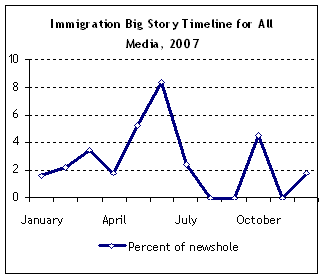As it becomes increasingly easier for everyday people to create their own mass media, more and more people are voicing their political opinions over blogs. In fact, politics are one of the most popular blog topics of today, representing 35% of the blogs on the Internet. One of the most common topics in political blogs is immigration, with most of these websites promoting immigration reform and pointing out the dangers of illegal immigration. Many immigration reform blogs use government data and other reliable sources to bring readers up-to-date information about this issue. This style of blog tends to be more news-based, rather than arbitrarily promoting the viewpoint of the writer. These sources, such as the popular blog “Immigration Impact,” are usually fairly reliable, because although they may be somewhat influenced by the author’s personal biases, they are mainly based on factual evidence.

In contrast, many other blogs make it no secret that the author supports immigration reform. While these are still valid sources of information about immigration reform, readers should be aware that the writer’s personal biases might have a stronger impact on the material presented in the blog. Rather than acting as news sources that relay as much relevant information about the issue as possible, these blogs frequently choose to discuss only the events supporting the blogger’s viewpoint.

Overall, immigration reform blogs show the mass media trend of interactivity and political controversy, as they allow readers and producers to have a two-way form of communication about this topic. As the Internet continues to grow in popularity and impact, these blogs will likely have increased impact on the community as well. While this form of media is a valuable resource in finding information about immigration, it is important to keep in mind that the writer’s personal beliefs might have a strong influence over the content of the blog.




